In the north of Israel, between the Mediterranean, the Sea of Galilee and the Jezreel Valley, an evocative patchwork of people, landscapes and monuments recall to many that, two thousand years ago, Jesus trod the paths of these fertile lands. From Nazareth to Capernaum, a hiking route traces his footsteps and offers the twenty-first century pilgrim an alternative way to discover the Holy Land.
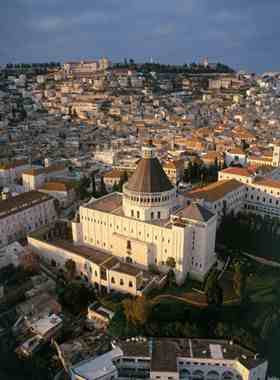 “The angel Gabriel was sent from God unto a city of Galilee, named Nazareth, to a virgin espoused to a man whose name was Joseph, of the house of David; and the virgin's name was Mary.” So Luke starts his telling of the story of the life of Jesus. And it's in the beautiful region of Galilee that the modern pilgrim starts this 65 kilometre trail, designed to be walked in three or four days, exploring the lands that Jesus knew, a land that for centuries has been an example of coexistence of ethnic and religious communities.
“The angel Gabriel was sent from God unto a city of Galilee, named Nazareth, to a virgin espoused to a man whose name was Joseph, of the house of David; and the virgin's name was Mary.” So Luke starts his telling of the story of the life of Jesus. And it's in the beautiful region of Galilee that the modern pilgrim starts this 65 kilometre trail, designed to be walked in three or four days, exploring the lands that Jesus knew, a land that for centuries has been an example of coexistence of ethnic and religious communities.
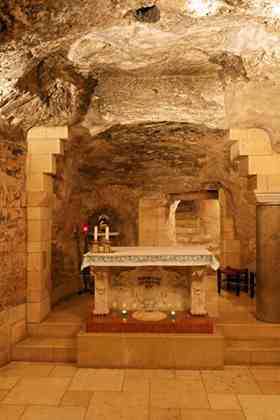 The starting point is Nazareth itself. What was once a farming village is now an urban sprawl with steep streets enlivened by the bustle of markets and bazaars and the echoing voice of the muezzin calling to prayer from the minarets of mosques, as Muslims are in the majority here. Here, where Jesus lived with his parents, all eyes turn to the Basilica of the Annunciation, the largest Christian sanctuary in the Middle East. Inside, there's another, much more humble focus: the small grotto where tradition says the Archangel Gabriel appeared to tell Mary of the child she would bear.
The starting point is Nazareth itself. What was once a farming village is now an urban sprawl with steep streets enlivened by the bustle of markets and bazaars and the echoing voice of the muezzin calling to prayer from the minarets of mosques, as Muslims are in the majority here. Here, where Jesus lived with his parents, all eyes turn to the Basilica of the Annunciation, the largest Christian sanctuary in the Middle East. Inside, there's another, much more humble focus: the small grotto where tradition says the Archangel Gabriel appeared to tell Mary of the child she would bear.
 Although the Holy Scriptures don't actually place it, the Jesus Trail identifies Sepphoris or Tzippori as the inspiration for the "city set on a hill whose light cannot be hidden" referred to by Jesus, and this is the next stop on the pilgrim's route. Certainly Jesus and his disciples would have known 'the Jewel of Galilee', then the largest city of Galilee, situated on the main route connecting the Mediterranean and Lake Tiberias. The rich and diverse cultural heritage of the city is an archaeologist's delight and includes wonderful Byzantine mosaics, in particular a finely detailed example illustrating the face of a woman and dubbed the Mona Lisa of Galilee.
Although the Holy Scriptures don't actually place it, the Jesus Trail identifies Sepphoris or Tzippori as the inspiration for the "city set on a hill whose light cannot be hidden" referred to by Jesus, and this is the next stop on the pilgrim's route. Certainly Jesus and his disciples would have known 'the Jewel of Galilee', then the largest city of Galilee, situated on the main route connecting the Mediterranean and Lake Tiberias. The rich and diverse cultural heritage of the city is an archaeologist's delight and includes wonderful Byzantine mosaics, in particular a finely detailed example illustrating the face of a woman and dubbed the Mona Lisa of Galilee.
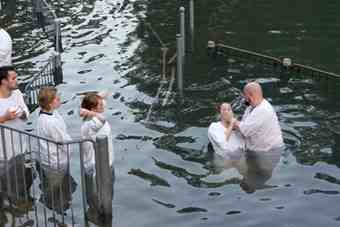 The trail continues on to Cana, where Jesus performed his first miracle when he turned water into wine at a wedding feast. Continuing on, the pilgrim reaches the Horns of Hattin, site of a decisive battle in 1187 when Saladin's forces defeated the Crusader army. On a clear day, the peak of the double hill offers a 360º panoramic view of the entire Jesus trail.
The trail continues on to Cana, where Jesus performed his first miracle when he turned water into wine at a wedding feast. Continuing on, the pilgrim reaches the Horns of Hattin, site of a decisive battle in 1187 when Saladin's forces defeated the Crusader army. On a clear day, the peak of the double hill offers a 360º panoramic view of the entire Jesus trail.
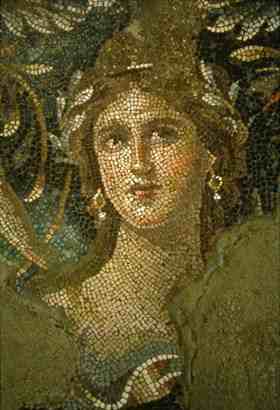 Next on the route comes Nebi Shu'eib, a religious complex that houses the traditional tomb of Jethro, father-in-law of Moses, and a prophet according to the Druze religion. Another wonderful view is offered by the cliffs of Arbel, 700 feet above the Sea of Galilee, where the panorama ranges from the Golan Heights to the Jordan River valley. Farther on, at the church at Tabgha, there is a mosaic of the miracle of the loaves and fishes dating from the third century which is said to commemorate the actual site of the miracle.
Next on the route comes Nebi Shu'eib, a religious complex that houses the traditional tomb of Jethro, father-in-law of Moses, and a prophet according to the Druze religion. Another wonderful view is offered by the cliffs of Arbel, 700 feet above the Sea of Galilee, where the panorama ranges from the Golan Heights to the Jordan River valley. Farther on, at the church at Tabgha, there is a mosaic of the miracle of the loaves and fishes dating from the third century which is said to commemorate the actual site of the miracle.
 The trail leads on to the Mount of Beatitudes, where Jesus spoke to the gathered crowd, and from there, towards the Sea of Galilee and the place where Jesus named Peter as the rock on which his Church would be built. On the north shore of the vast lake stands Capernaum, Jesus' base during much of his ministry and the site of many miracles retold in the Gospels.
The trail leads on to the Mount of Beatitudes, where Jesus spoke to the gathered crowd, and from there, towards the Sea of Galilee and the place where Jesus named Peter as the rock on which his Church would be built. On the north shore of the vast lake stands Capernaum, Jesus' base during much of his ministry and the site of many miracles retold in the Gospels.
 Heading on along the lake shore brings the pilgrim to the point on the Jordan where Jesus was baptised by John. Although the river now does heavy irrigation duty and is reduced to a mere muddy trickle in some places, it is still a popular site for baptisms.
Heading on along the lake shore brings the pilgrim to the point on the Jordan where Jesus was baptised by John. Although the river now does heavy irrigation duty and is reduced to a mere muddy trickle in some places, it is still a popular site for baptisms.
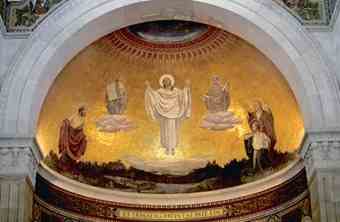 Rising nearly 600 metres above sea level on the eastern edge of the Jezreel valley is Mount Tabor, site of the Transfiguration of Jesus. Two churches stand on the mountain top, one Franciscan built on Byzantine ruins, and the other a small Greek Orthodox church named after the prophet Elijah. The final stop on the trail, before returning to Nazareth, is Mount Precipice whose peak offers a sweeping view of the Jezreel Valley and Mount Tabor. This is the cliff from which tradition says the mob wanted to throw Jesus after his bold speech in the synagogue which ended with him saying “No prophet is accepted in his own country.”
Rising nearly 600 metres above sea level on the eastern edge of the Jezreel valley is Mount Tabor, site of the Transfiguration of Jesus. Two churches stand on the mountain top, one Franciscan built on Byzantine ruins, and the other a small Greek Orthodox church named after the prophet Elijah. The final stop on the trail, before returning to Nazareth, is Mount Precipice whose peak offers a sweeping view of the Jezreel Valley and Mount Tabor. This is the cliff from which tradition says the mob wanted to throw Jesus after his bold speech in the synagogue which ended with him saying “No prophet is accepted in his own country.”
Source: Hello Magazine [December 23, 2010]